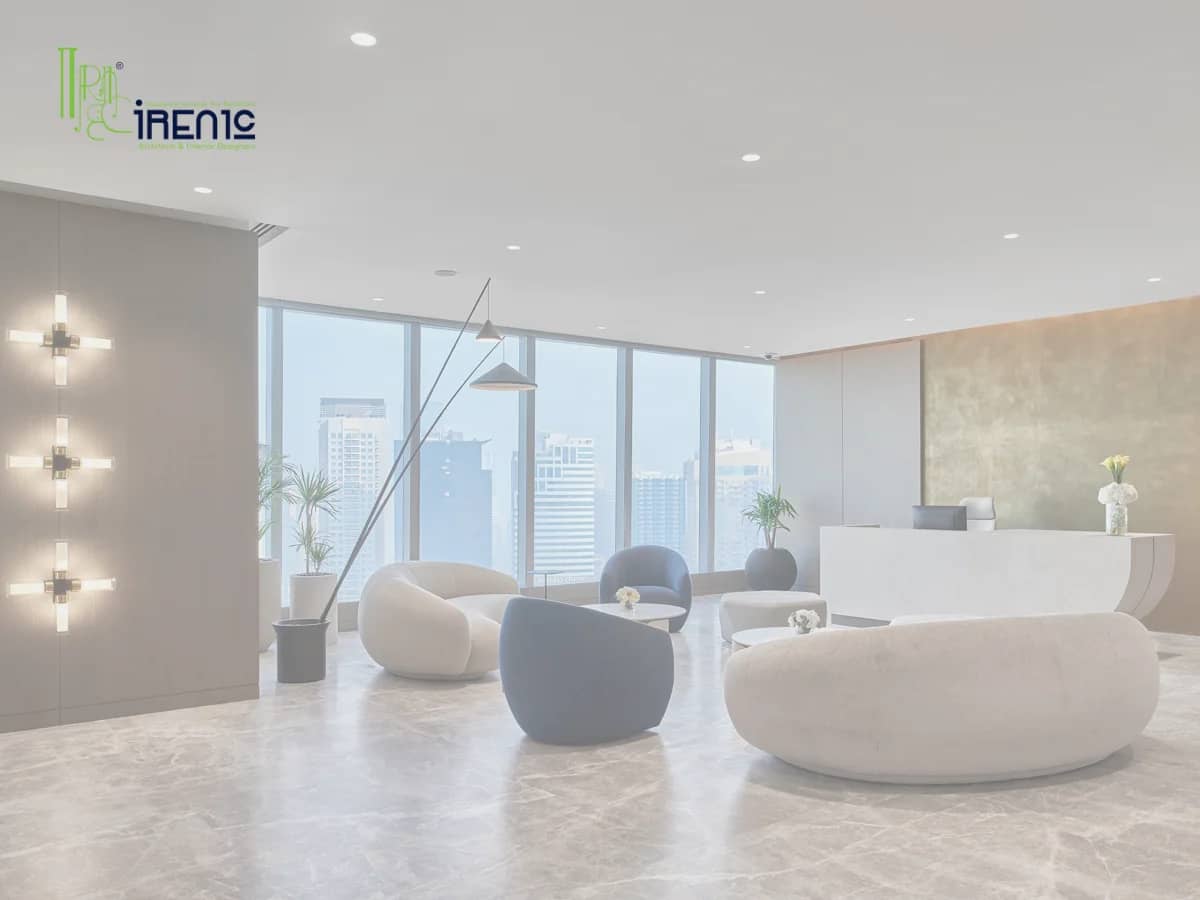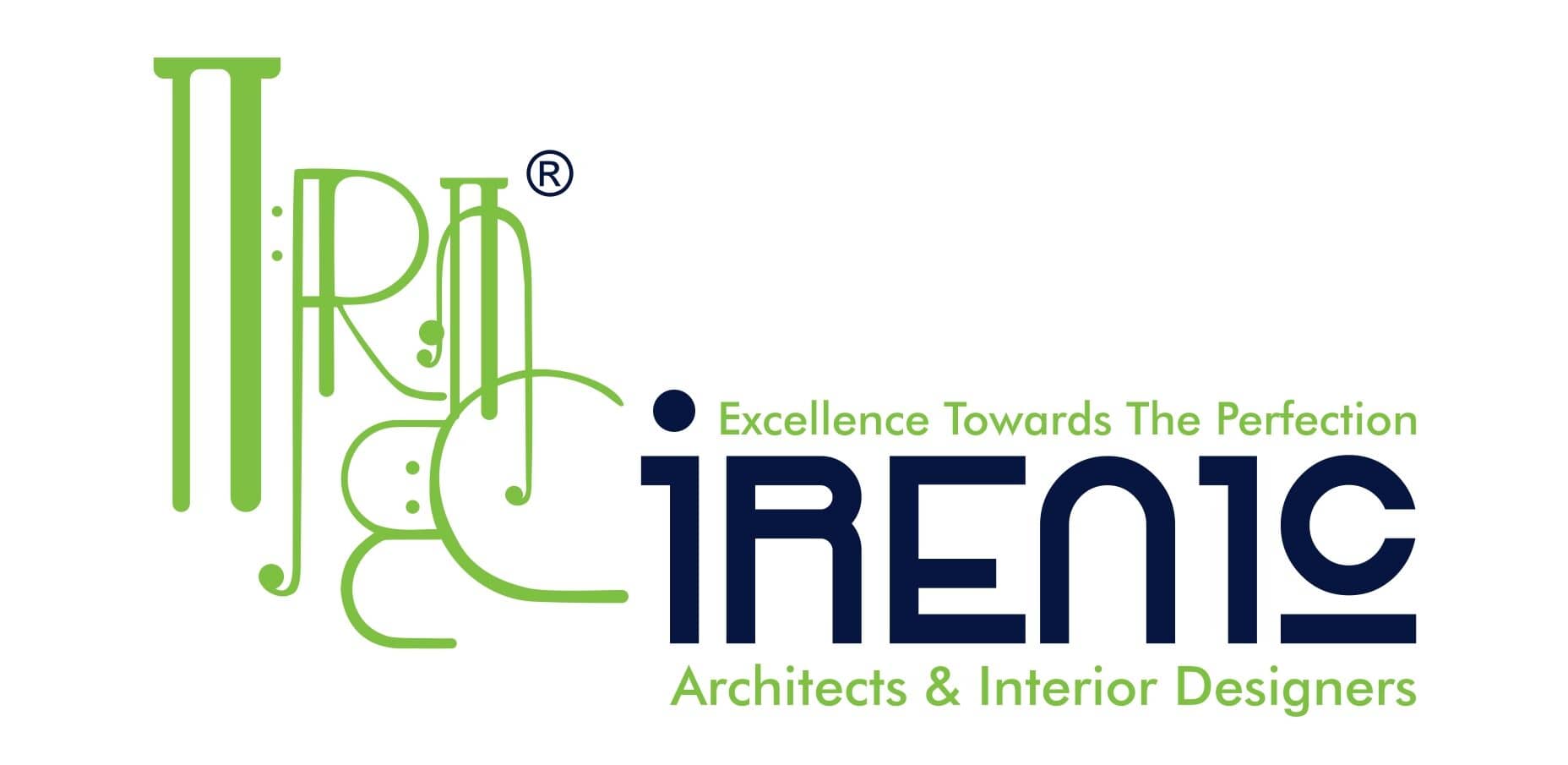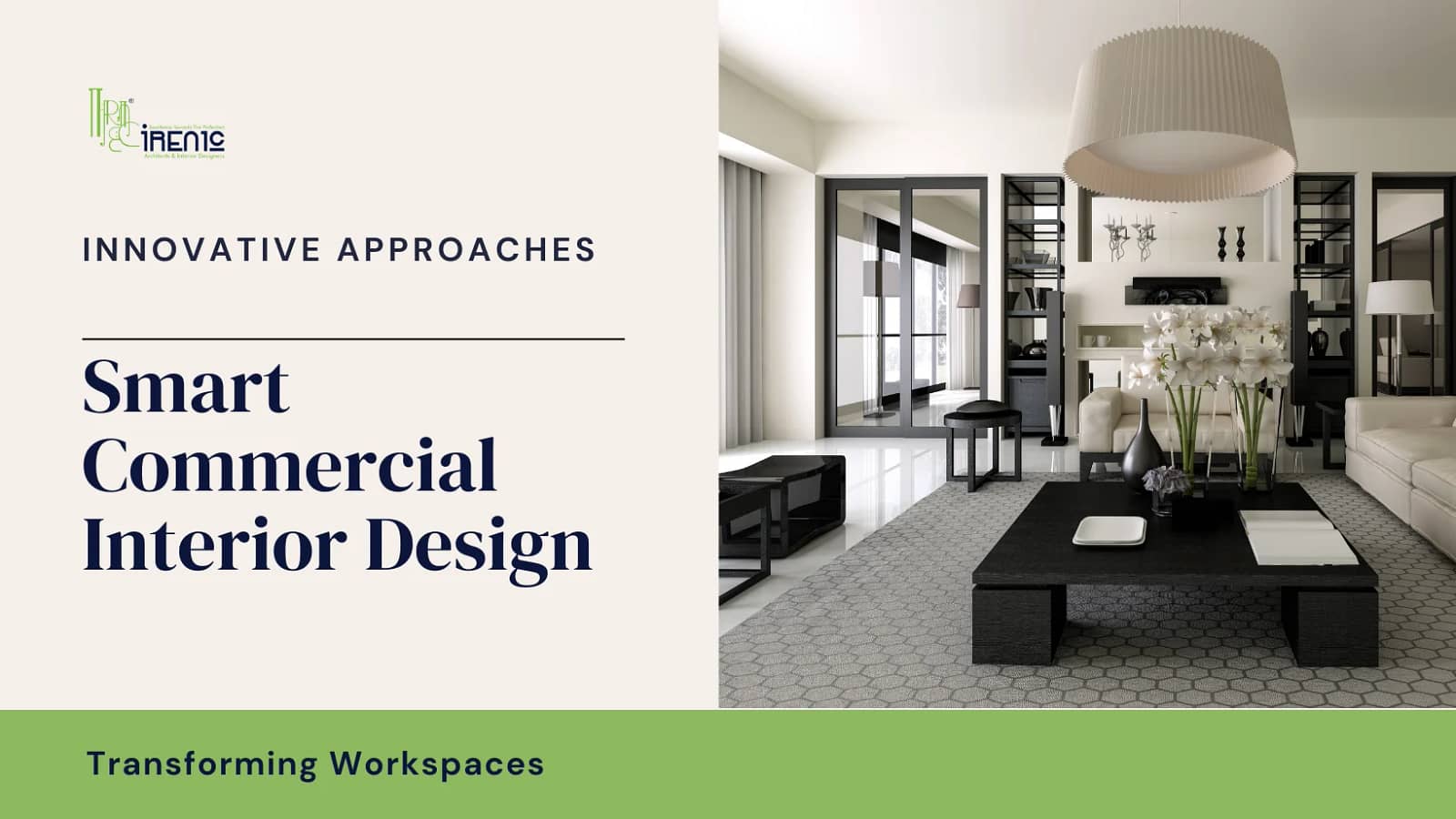Introduction
In today’s fast-paced business landscape, adopting innovative Approaches to Smart Commercial Interior Design is crucial for companies aiming to craft efficient, sustainable, and attractive work environments. This approach transcends mere aesthetics, integrating cutting-edge technologies and forward-thinking methods to boost functionality and productivity. In this blog, we’ll trace the evolution of commercial interior design with insights from industry leaders like Irenic Architects and Interior Designers, experts in creating optimal workspaces. We’ll explore essential elements of smart interiors, examining their impact on fostering conducive work environments. Furthermore, we’ll delve into groundbreaking technologies shaping future workspace designs and showcase real-world sustainable practices. Join us as we uncover how smart Commercial Interior Designers projects are reshaping modern workplaces for the better.
The Evolution of Commercial Interior Design

Commercial interior designers have significantly evolved over the decades, moving from basic functionality and aesthetics to incorporating advanced technologies and adapting to the changing needs of businesses.
Historical Perspective: Traditional commercial buildings were often designed to maximize space without considering creativity or collaboration. These spaces were rigid and uninspiring.
Technological Advancements: The rise of computers, the internet, and mobile technology revolutionized interior architecture and architecture design development, leading commercial interiors to open-plan offices and collaborative workspaces that foster innovation.
Changing Needs: Modern businesses require flexible spaces that adapt to different tasks and team sizes. This shift has led to the rise of multipurpose areas and smart office interiors.
Key Elements of Smart Commercial Interior Design
Smart commercial interior decorators focus on creating efficient, sustainable, and employee-friendly environments. Here are the key elements:
Smart Technology Integration: Utilizing IoT devices, AI, and machine learning in building management systems for managing lighting, climate, and security to create intelligent environments.
Sustainable Materials and Practices: Implementing eco-friendly materials, recycled materials in construction, and sustainable building materials to promote sustainability.
Flexible Layouts: Designing areas that can be easily reconfigured to meet changing business needs promotes versatility and efficiency.
Employee Well-being and Productivity: Enhancing comfort, health, and productivity through ergonomic furnishings, natural lighting, and quiet zones.
Innovative Technologies in Commercial Interiors
Several innovative technologies are transforming commercial interior design:
Internet of Things (IoT) and Smart Systems: IoT enables interconnected devices to create intelligent environments. Smart systems automate lighting, HVAC, and security, improving efficiency and comfort.
Augmented Reality (AR) and Virtual Reality (VR): AR and VR technologies provide immersive design experiences, allowing clients to visualize and interact with the space before it is built.
Energy-efficient Lighting and Climate Control: Advanced lighting solutions like LED and smart thermostats help reduce energy consumption while creating comfortable environments.
Smart Furniture and Fixtures: Furniture with integrated technology, such as wireless charging stations and adjustable desks, enhances functionality and user experience.
Sustainable Practices in Smart Commercial Interiors
Sustainability is a core component of smart commercial interior design.
Eco-friendly Materials: Using sustainable materials like bamboo, reclaimed wood, and recycled metal reduces environmental impact.
Waste Reduction and Recycling: Implementing practices that minimize waste and promote recycling creates a more sustainable workspace.
Energy Efficiency: Utilizing energy-efficient systems, such as solar panels and energy-saving appliances, lowers operational costs and reduces carbon footprint.
Biophilic Design: Incorporating natural elements like plants and water features can improve air quality and enhance employee well-being.
Case Studies of Innovative Commercial Interiors
Several companies have successfully implemented smart commercial interior design.
Successful Examples from Different Industries: Tech giants like Google and Apple have created innovative workspaces that enhance collaboration and creativity. Retailers like IKEA use smart design to improve customer experience and operational efficiency.
Key Takeaways and Lessons Learned: These examples highlight the importance of flexibility, sustainability, and technology integration in modern commercial interiors.
Impact on Business Performance: Companies that invest in smart design often see improved employee satisfaction, increased productivity, and lower operational costs.
Future Trends in Smart Commercial Interior Design
Looking ahead, several trends are set to shape the future of commercial interior design:
Predictions for the Next Decade: Expect more integration of AI and machine learning in building management systems for smarter, more residential interiors.
Emerging Technologies: Technologies like 5G and edge computing will further enhance the capabilities of smart offices.
How Businesses Can Stay Ahead: To stay competitive, businesses should continuously monitor emerging trends and be willing to adopt new technologies that enhance their workspaces.
Conclusion
Innovative approaches to smart commercial interior design are transforming workspaces, making them more efficient, sustainable, and conducive to employee well-being. By integrating advanced technologies and sustainable practices, businesses can create environments that meet their current needs and adapt to future challenges. As we move forward, the emphasis on smart, sustainable, and flexible design will continue to grow, shaping the future of commercial interiors.
To read more about effective strategies from commercial architects and commercial interior designers, visit the next blog on Irenic Architects‘ website. Start your journey towards success today!


